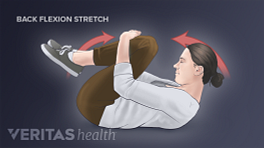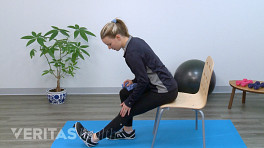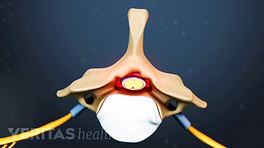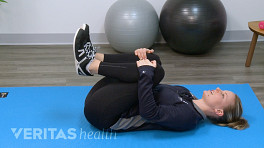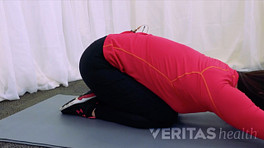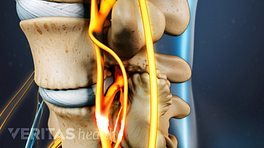With joints in the spine as with joints everywhere else in the body, there is a truism – “use it or lose it”. Staying active is one of the most important things to do to manage the symptoms of lumbar spinal stenosis. The key is to find exercises that that are doable and enjoyable, and will also not exacerbate or bring on the symptoms of stenosis.
See Spinal Stenosis Symptoms and Diagnosis
In This Article:
- Living with Lumbar Spinal Stenosis
- Exercises for Lumbar Spinal Stenosis
- Pain Management of Lumbar Stenosis
- Posture and Nutrition Adjustments for Lumbar Stenosis
The Importance of Exercising
Before examining different exercises that may help with spinal stenosis, here are 5 important reasons to stay active:
- Exercise will increase the blood flow to the back, bringing needed oxygen and nutrients and washing away toxic metabolites.
- Exercise will strengthen the muscles around the spine, helping to take the pressure off of the bones and other static structures in the back.
- Exercise will help maintain flexibility, which will help prevent tight muscles that pull and torque the spine, which can worsen symptoms of spinal stenosis.
-
Exercise will help maintain a healthy weight. Excess weight can lead to worsening back pain and leg pain.
- Staying active helps with emotional and mental health as well. Getting up and moving gets the blood and endorphins flowing and improves one's overall outlook, which in turn helps reduce pain and improve physical symptoms.
Examples of Effective Exercises for Spinal Stenosis
The straight leg raise exercise strengthens the core muscles.
An effective exercise program for people with lumbar spinal stenosis usually includes a combination of range of motion, strengthening, endurance, and stability related activities. Patients often find that activities/exercises for lumbar stenosis that are done in a bending - forward position are more comfortable.
- Some people find bicycle riding an enjoyable and rewarding activity. Stationary biking may be preferable.
- Others find swimming to be a positive activity, or water therapy (which is exercise in a pool).
- Joining a gym and working with a therapist or trainer is often an effective way to learn some good stretching and core strengthening exercises.
- Taking a Tai Chi class that involves slow, deliberate and flowing movements of the body is another way to exercise and treat spinal stenosis.
The above activities are on the smooth and repetitive end of the exercise spectrum. Patients may have less pain by avoiding the higher impact exercise such as jogging, avoiding contact sports, and avoiding long periods of standing or walking.
A few points to keep in mind about exercise and spinal stenosis:
- Remember that the best exercise is one that will become part of one's daily routine. Planning to bicycle everyday for one hour won't do any good if it isn't fun and doesn't become part of the routine. Pick something that is personally rewarding, fun and enjoyable. Ideally, find an activity that can be done regardless of weather conditions so that exercise can be made part of everyday life.
- Remember to always check with the doctor before starting any new exercise regimen. The doctor may also recommend a physical therapist to learn exercises that can then be incorporated into a daily exercise routine.
- Don't exercise through pain and other symptoms. If the spinal stenosis symptoms are brought on by the activity, or worsen during or after the activity, stop and discuss it with the doctor.
For more information on Exercise and Spinal Stenosis, please see Exercise for Sciatica from Spinal Stenosis.


